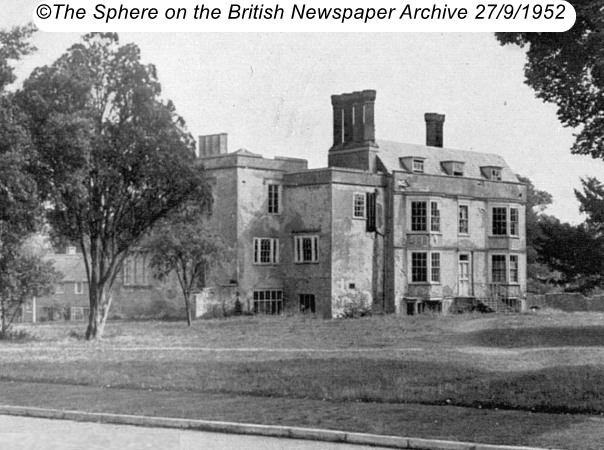
This photo is from 1952. The houses in Kingston Close, behind Fitzharris Manor House, were built between 1946 and 1948 for workers at Harwell’s Atomic Energy Research Establishment, established in 1946.
The manor house and grounds had been requisitioned by The Ministry of Supply. While building the new housing estate, the Ministry also proposed demolishing the house. The Friends of Abingdon and the Council for the Preservation of Rural England had both voiced strong opposition to the demolition arguing that the Elizabethan and eighteenth-century architecture had been allowed to fall into disrepair due to years of neglect by the Ministry. Abingdon Borough Council expressed doubts about its ability to afford the repairs of £20,000 even if the property were gifted to the town. The Ministry then went ahead and demolished the manor house early in 1953.
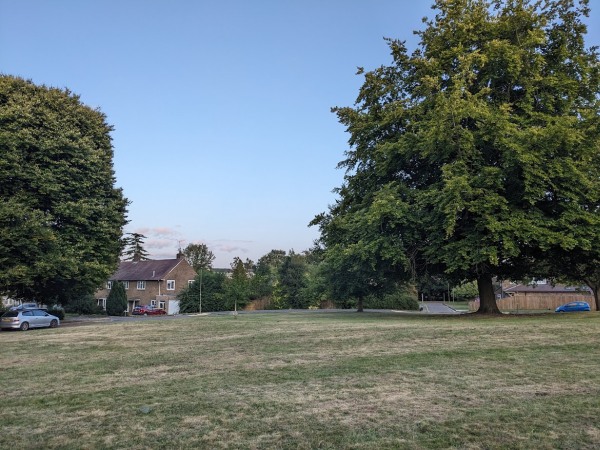
Nothing was ever built on the site where the manor house stood. Today, it’s a green space with trees, a plaque commemorating the house, and its foundations buried underground. This picture offers a similar view from the green towards Kingston Close.
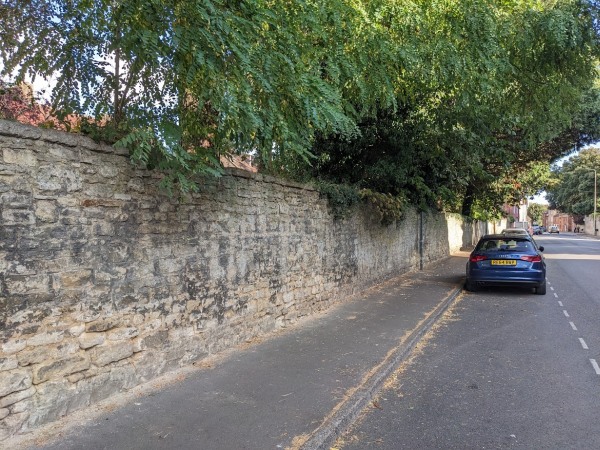
There are some surviving features from the original estate. Stone walls and trees surround parts of the property, including the wall along Bath Street and that running between the estate and Withington Court, and along Fitzharrys Road.
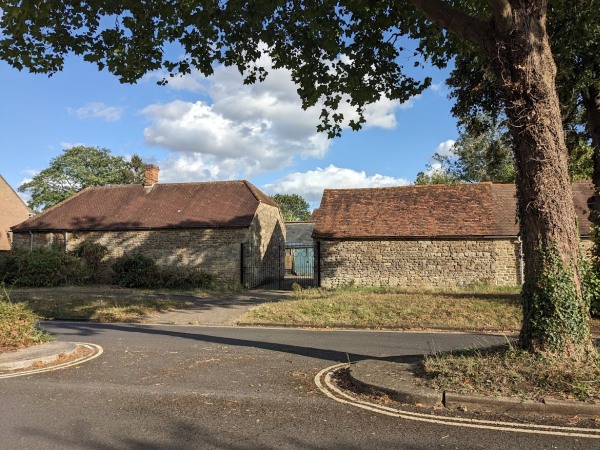
There is also a stable yard that is used for garages and what looks like an electricity substation.
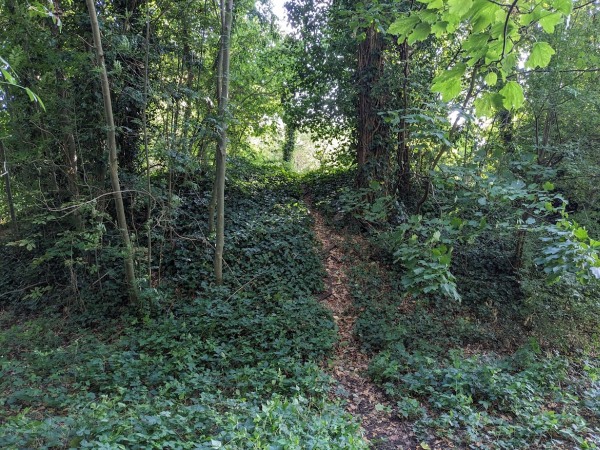
The most significant survivor, however, is the motte and bailey mound, a pre-existing Norman fortification that predates and has outlasted the house.
There is more about the Fitzharris Estate at https://www.abingdon.gov.uk/abingdon_streets/fitzharris-estate .
What confuses me are the variations in spelling with the old estate called Fitzharris and there is a Fitzharris Industrial Estate, but there are Fitzharrys Road and Fitzharrys School.
Thanks to The Sphere on the British Newspaper Archive 27 September 1952 for information about the protests and the first photo. To Dick Barnes article ‘Fitzharris Manor, Abingdon: from Gentleman’s residence To Demolition’ for ideas about what remains. To Abingdon Past and Present by E Drury and J Thomas for pointing out the houses behind the manor house are Kingston Close. To Alwyn for telling me about the estate today and showing me the estate wall in his back garden. He also said the houses had garages as some American scientists at the time, who AERE wanted to keep after the war, expected garages.
A detailed history of Fitzharris Manor House is recorded in the web page Berkshire Old and New No 23. page 16. written by the late Dick Barnes.
http://www.blha.org.uk/wp-content/uploads/2020/02/BOAN06.pdf
Hi M, Thanks for that. Very Interesting.
I was also reminded by another correspondent of the suspected spy that lived on the estate among all those scientists. See https://www.abingdon.gov.uk/abingdon_people/bruno-pontecorvo
Mr Candy who delivered milk to Bruno Pontecorvo told me he found a note one day on the doorstep to say Bruno P. would pay his milk bill when he came back from his holiday. He never came back. Mr Candy was still waiting for the money years later!
Spelling correctly (?!) is a comparatively recent matter. ‘Shakespeare’ is spelt several ways by the man himself, and rules and consistency seem to have been less important than they are now. Do we blame lexicographers?
Words change their form and meaning. Nobody now uses ‘prevent’ to mean ‘go before’, but that’s what it meant to the people who wrote the Book of Common Prayer.
Much spelling is based on speech sounds: “I could of…” instead of “I could have…” Fitzharry’s and Fitzharris are a very minor blip!
While I agree with you over the changes over time based on pronunciation, it will never be correct to say ‘I could of” – grammatically incorrect.
I agree, but that wasn’t my point; people often spell according to what they hear (or imagine they hear). Harry’s could easily become Harris.
There is more on this site with memories of living on the state in the early days.
http://fitzmanorestate.org.uk/